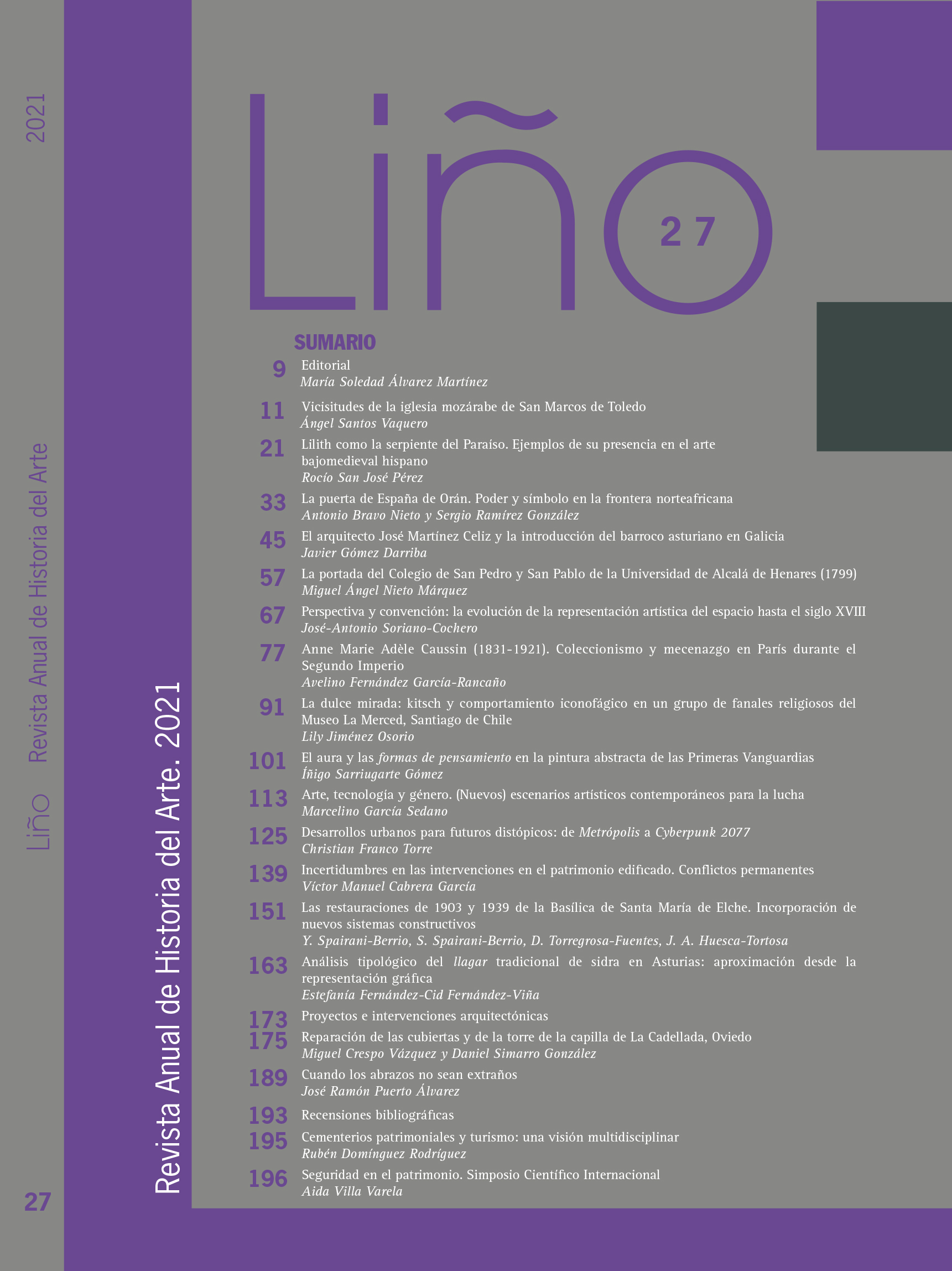Abstract
The scope of the article is the definition of the traditional cider manufacturing establishements in the Principado de Asturias, llagares, as an architectural type. Direct and material approach to the analyzed asset have supported the research method, for which hand drawing and graphic represen-tation studies from other authors have been essential. A territorial, functional and constructive pers-pective, supported by the exposition of the invariants that characterize the type and its adaptations has driven the research. In short, an original contribution of knowledge defending the conservation and dissemination of these architectures that are in a clear period of obsolescence due to the lack of use and maintenance.
References
ARAMBURU, Tomás, “Lagares y lagareros”, en El libro de la sidra, Pentalfa, Oviedo, 1991, pp. 361-391.
BUENO SÁNCHEZ, Gustavo (coord.), El libro de la sidra, Pentalfa, Oviedo, 1991, p.35.
CHUECA GOITIA, Fernando, Invariantes castizos de la arquitectura española, Dossat, Madrid, 1947, p.29.
CRABIFFOSSE CUESTA, Francisco, Valle, Ballina y Fernández, S.A. Historia de una empresa, Fundación José Cardín, Villaviciosa, 2010, p. 120.
Decreto 64/2014, de 2 de julio, por el que se declara Bien de Interés Cultural de Carácter Inmaterial la Cultura Sidrera Asturiana, Consejería de Educación, Cultura y Deporte del Principado de Asturias. [https://sede.asturias.es/bopa/2014/07/11/2014-12067.pdf]
FLORES LÓPEZ, Carlos, Arquitectura popular española, Aguilar, Madrid, 1973, p.76.
GARCÍA ÁLVAREZ, Luis Benito, Las representaciones de la sidra en la literatura y la pintura asturianas contemporáneas (1850-1939), Ayuntamiento de Gijón, Gijón, 2008.
GARCÍA FERNÁNDEZ, Efrén y José Luis, España Dibujada 1. Asturias y Galicia, Servicio Central de Publicaciones del Ministerio de la Vivienda, Madrid, 1972, p. 217.
GARCÍA GRINDA, José Luis, “La aplicación del tipo en la arquitectura popular: evolución versus permanencia en el territorio castellano-leonés”, en Arquitectura popular de España: actas de las jornadas, 1-5 diciembre 1985, p.431-447.
HEVIA LLAVONA, Inaciu, Sidra y llagares tradicionales en tierras de Maliayo, Fundación José Cardín, Villaviciosa, 2011, p.56.
LEGAZPI, José María, El llagar y la sidra, Biblioteca Popular Asturiana, Gijón, 1982, pp. 12 y 13.
Ley 1/2001 de Patrimonio Cultural de Principado de Asturias
LÓPEZ ÁLVAREZ, Joaquín (ed.), De Santo Tomás y Pumarada, Fray Toribio. Arte General de Grangerías, San Esteban, Salamanca, 2006, p. 962.
Plan Nacional de Arquitectura Tradicional, Ministerio de Educación Cultura y Deporte – Gobierno de España, Madrid, 2015, p.14, [https://sede.educacion.gob.es/publiventa/d/20699C/19/1]
RIVAS, David, La sidra asturiana. Bebida, ritual y símbolo, Picu Urriellu, Gijón, 2004, p.102.


